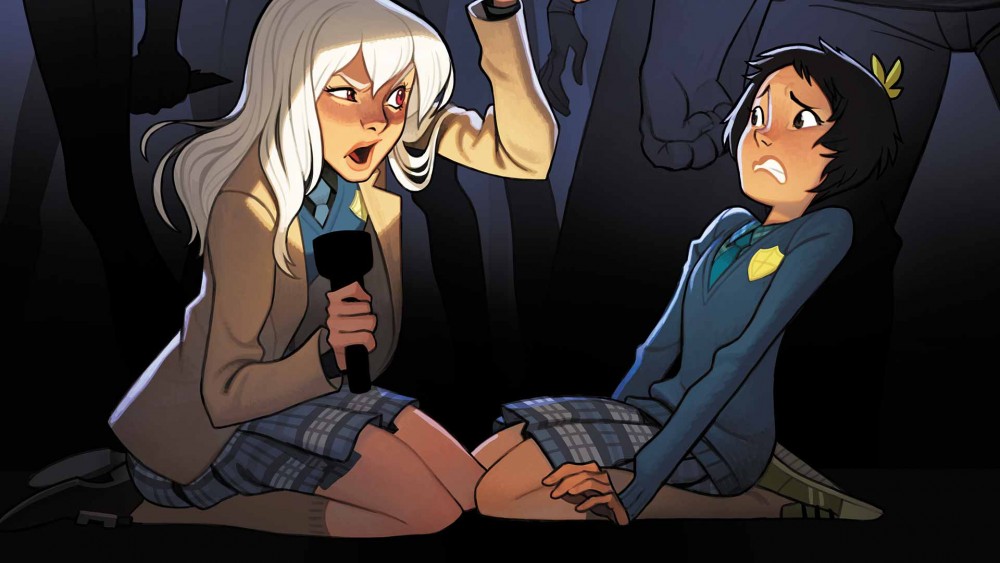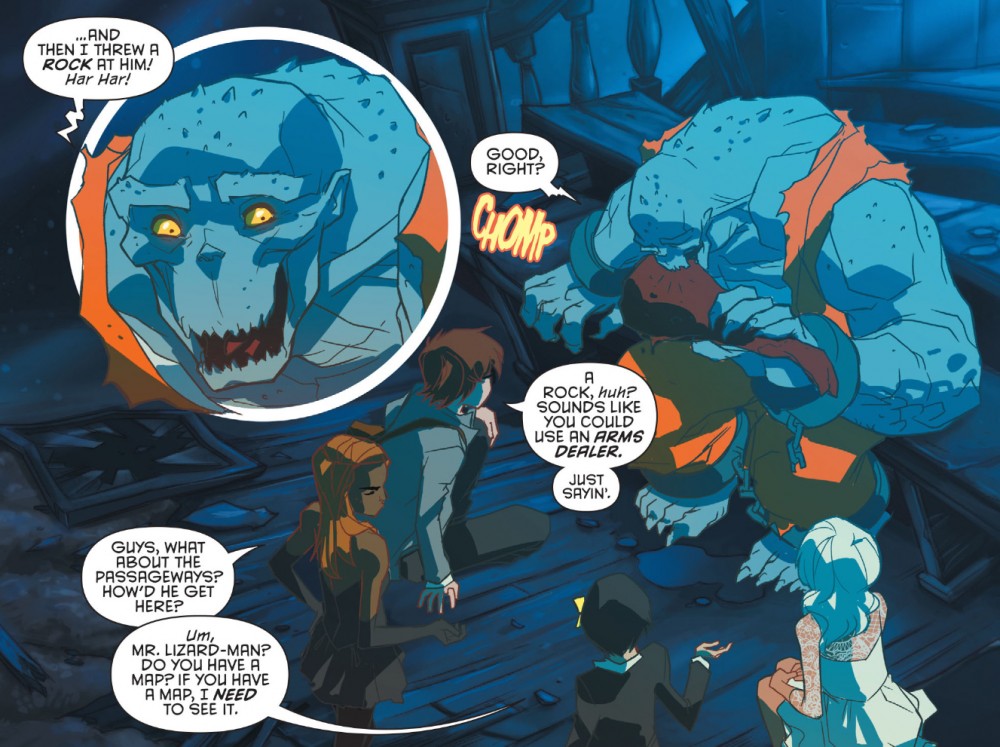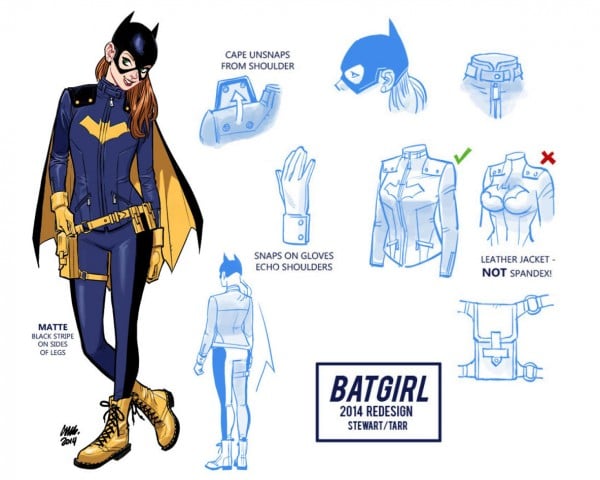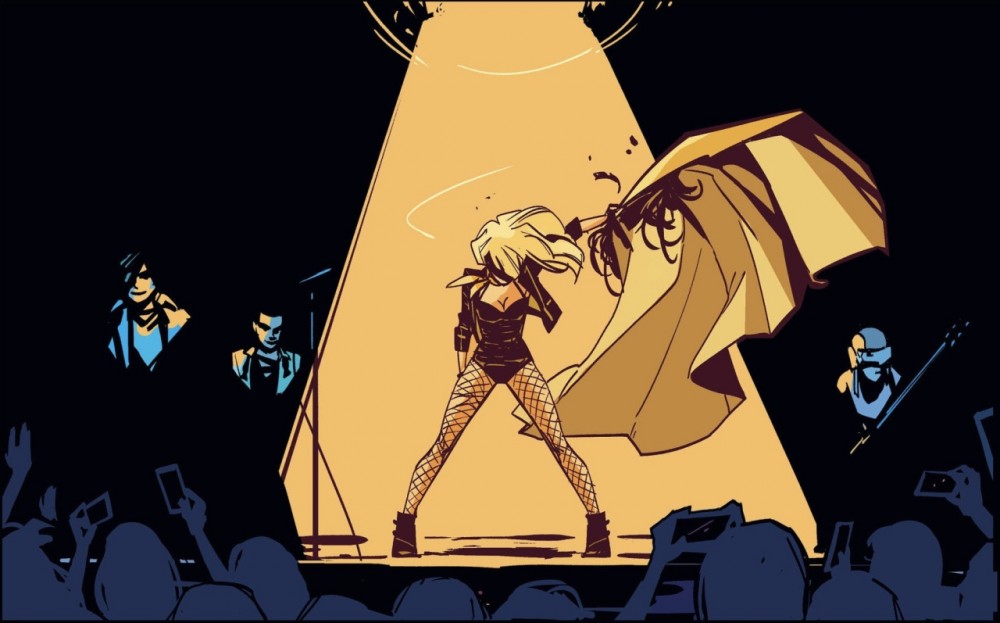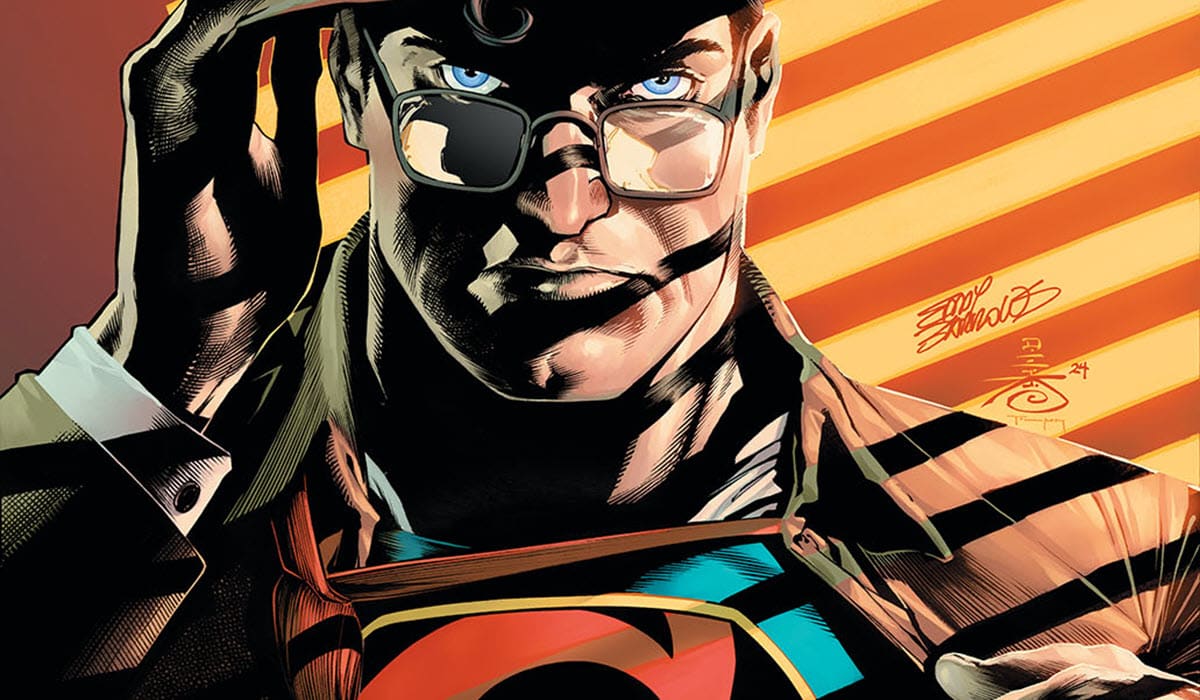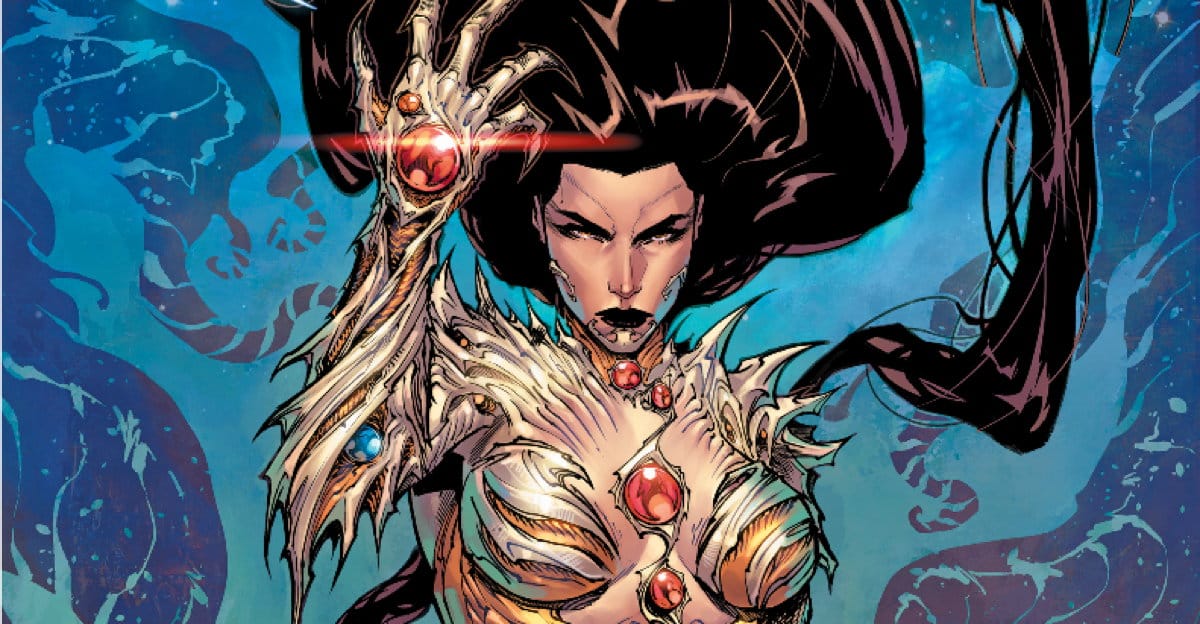Brenden Fletcher is one of most unique voices in superhero comics and easily one of my favorite writers at the Big Two. Along with fellow writers like Steve Orlando, Ming Doyle, Tom King and David Walker; Fletcher is leading a charge that is creatively rejuvenating DC and giving the publisher its best line-up of titles in years. Mixing indie energy with high octane superheroics, Fletcher has hit up something quite special with his corner of Gotham that he’s established with titles like Gotham Academy (with Becky Cloonan and Karl Kerschl), Batgirl (with Cameron Stewart and Babs Tarr), and Black Canary (with Annie Wu). At Dragon Con this year, I had the privilege to sit down in the press room with Fletcher and a few other journalists to briefly discuss a few topics surrounding these new-look DC titles.
On the animated potential of Gotham Academy and Batgirl:
Absolutely, yeah. I mean, why aren’t they movies yet? That’s the question. No, I mean, I think we have always felt that we were creating series that should be good for new readers. Like you should be able to pick up Batgirl at 35 and feel like it’s a clean start. That was the whole point of it, right? So we’ve built this little world for Barbara Gordon, and I think that is way more easily adaptable to other mediums; film, television, than if you’ve got that character in just the larger DCU. We created this little bubble for her, and that’s a great place to start out as a TV or a film. Gotham Academy is the same. It’s a little closed off area of the DCU that can be its own thing, that should be a cartoon. Who is with me?
But I mean, there’s so much going on with that at DC and we’re — and it’s like there are different divisions, there’s all sorts of stuff going on behind the scenes, the time that it takes to kickstart those and make them happen is like years, literally years, so you never know. Those things could happen. Keep your fingers crossed, keep e-mailing DC.
Given that Fletcher and Karl Kerschl had paired up before in Wednesday Comics (in one of the greatest Flash stories ever, for my money), did they pitch Gotham Academy together or as a trio with Becky Cloonan?:
So the story of Gotham Academy is really a Becky and Mark Doyle story to begin with. It was Mark Doyle getting the back chair – he took over from his predecessor and immediately — he was like ‘okay, how do I see the Batman world working?’ Who do I reach out to? And he had worked with Becky on some Vertigo projects, so he called her up and said, so there’s all these books. Do you want to do any of these books? And she was like, not so much, but I would love to do my own thing in Batman, and he was like ‘oh, okay, well, so what would that be?’ And she said, ‘I don’t know, you just called me. I need some time to think about it. But maybe something with kids, maybe like a boarding school’…Gotham Academy is a name that’s been thrown around. And it had existed as an institution that people had spoken about. It was in an episode or a few episodes of Young Justice as a place that the kids went, but it wasn’t established what kind of school it was. There was no story around it. So Mark immediately said, ‘yeah, that sounds great’, and Becky got off the phone and was like, ‘I don’t have time to do this on my own. I can’t write and draw this on my own’, and Karl and I were actually in the studio with her in Montreal, and so she asked me to go write it, and asked him to draw it, and that was it.
I mean, it was a strange — I mean, obviously after that, we had to go through the formal pitching process, but that was the genesis of it. It was just a concept of wanting to do something for younger readers involving younger characters, new characters, in a corner of the Bat universe that we hadn’t really spent any time in. And we built it from there. We did the traditional pitch. We did the one pager. Karl did a bunch of designs. We sent that in. How could they say no? Come on.
What spurred the decision to bring Killer Croc into the narrative of Gotham Academy as its sort of “Miyazaki cuddly creature” type figure?:
I think you can see from — If you don’t see it in the text, you can certainly see it in Karl’s artwork that we’re all influenced by Batman the Animated Series. I mean, just his design of Killer Croc alone harkens back to Kevin Nowlan’s design that was used as the initial animated series design. I think if you go back and look at those episodes and the way the character was handled there, there is some pathos in Croc’s portrayal. He is good with kids. And I think we weren’t referencing that immediately when we decided to use Croc. It wasn’t something that we had in the forefront of our minds, but it was something about — I think something about the portrayal of that character in the animated series that informed how we felt about him, and immediately felt like he would be a good companion for the children. He would be a character that’s sympathetic to the kids and weirdly less creepy than like having the kids go around with the Riddler.
On fan response to the new look version of Gotham:
Well, it’s like casting, right? In some of the situations, books start with the illustrator. In all of the situations that have occurred around my books, the illustrators have come after the project was pitched. Karl and I came on at the same time, so we were part of the genesis of Gotham Academy, but it was Becky’s project to begin with. Becky’s choice of having Karl was like casting what the visuals should be for Gotham Academy.
Very similarly, Cameron and I spent months hunting down the perfect Batgirl artist. Babs was on his list early on, but we kept — We knew that she had never done sequential, and that was a thing. That’s extra commitment for him. It’s like if we go with this young lady, who would be perfect for it, I have to do layouts for every one of those books and I’m already drawing a comic monthly. So it was a big deal for Cameron to commit to doing layouts for Batgirl. We could have just found another artist who could do sequential, and it would have been easier on him, but Babs was the right look. There was no one else who could draw Black Canary but Annie Wu. In fact, the book is built around her in a lot of ways. It’s how she wants to work, how she wants to draw, what kind of story she wants to tell, and I talk about this all the time. I am just trying to get out of the way of what Annie wants to do in that book. Like if I’m doing my job correctly, I’m just guiding a plot in a way, but the amount of story that she wants to tell, the kind of gags that she wants in it, the way she wants to render it, I’m trying to facilitate her book in a lot of ways.
Gotham Academy is kind of similar. We’re trying to facilitate Karl’s book, and literally, Babs tells us what she wants in those issues. She has a list. It’s called ‘What Babs Wants To Draw’, and Cameron and I, when we come to a new issue, we bust out the list, and it’s like okay: ‘Luchador Batgirl. Can we do wrestling in this issue? Probably not, okay. What else?’ But there’s literally a list of stuff that she wants to draw. Comics are great when that harmony is there. We’re trying to have that harmony and knowing what the artist wants to render on the page is a great starting point for us as writers. We attack it that way, and then it builds into this comic that everybody is excited about, on the creative teams anyway.
On the co-writing relationship between Fletcher and Cameron Stewart and how it differs from his work with Becky Cloonan:
It’s like night and day. And in addition, it’s changed with Cameron and I lately as well. Becky and I do an even split of the issues. We do a breakdown usually together of what kind of story goes on what page. So we get a 20 page breakdown, and then we literally split it. ‘Do you want to do page 1 to 10, or am I doing 1 to 10 this time? Eh, I kind of wanted to write that thing on page 15. Okay, you do the back half. I’ll do the front half.’ And then if things happen, I don’t have time — The script is due, and I don’t have time, she’ll pick it up and do an extra couple pages, or vice versa. Becky gets really busy on Southern Cross, I’ll just write more of the issue, and then we go back and rewrite each other’s stuff afterwards.
Those first six issues that we did of Batgirl are completely different. We started trying to script at the same time, but he was like ‘I can’t even write like this when I’m visualizing it, and I have to draw it anyway, so just give me the beats that you’re feeling, and I’ll see what I can pack on the page.’ And then he would go straight to lay outs from incorporating some of my beats, not incorporating others of them, and building the visual story from our breakdown that we did together, and then we would go and dialogue it afterwards. In a lot of cases there was only sketchy dialogue for Batgirl from 35 to 40. Now we’re doing full script together because Babs is doing most of her layouts herself and getting some assistance from people who aren’t Cameron, so we need full script up front.
How his personal musical experience reflects what ends up in Black Canary, and just why isn’t there a bass player in the band? (in a previous life I played bass in a touring band, so this had me very curious):
Well, that’s because I have musical experience that I know that you actually don’t need a bass player to have a band. That’s a very traditional format. In fact, the drummer is primarily a bass player, but she plays drums live because the drums also have triggers on them which affect a lot of the way that the sequenced parts of the music works. This is the secret to live music: sequencing. It’s why Paloma Terrific has such a big electronic rig, because there’s a lot of sequenced stuff going on. Nobody cares about this in superhero comics though [editor’s note: I do Brenden, I do!] so I don’t write it as part of the story. I’m trying to include it in the back matter stuff for nerds who care about music. I actually I had a whole gear thing…Paloma Terrific selected gear written up for the last section of back matter, but it got cut for space. It’ll show up at some point.
My music experience is mostly just about the touring experience and what goes into building a tour and what’s available to people without money and to people with label money. I think those who are kind of in the know a little bit of how those things work had a lot of questions when issue one came out, because it seems like this is a band that went from nothing to a fair sized audience and an expensive tour bus in zero pages, and that’s not real. Neither is a Canary Cry, but I mean, people take greater issue with the fact that they have a tour bus than the fact that Dinah can level a building with her voice. However, that aside, it’s actually a story point, and it’s something that comes up later that maybe there are more questions about what this record label is and what it has to do with the money they’ve poured into this tour, and maybe there are reasons for everything. And so that’s all built with my knowledge of how that stuff works. Actual music stuff is not going to be a big part of it. I treated it a little more like Jaime Hernandez treated Love and Rockets where you see the band on stage, but you don’t try to have a visual depiction of sound, of music. I mean, we do it with her Canary Cry because it’s an attack, but we try not to do it outside of that. I don’t want like a treble clef appearing on the page and little eighth notes dancing around everyone. I don’t want lyrics spilling out everywhere that is just going to feel like some awkward poetry because there’s no actual implied rhythm or there’s no sound to it. But hey, you know what would be perfect is another media component that could be added onto it, and then who knows what could happen in the future.
Batgirl #44 hit retailers this week, and you can nab last week’s Black Canary #4 (with guest artist Pia Guerra) and the previous week’s Gotham Academy #10 too while you’re at it. All are very much worth your time if you’re not already on-board.



